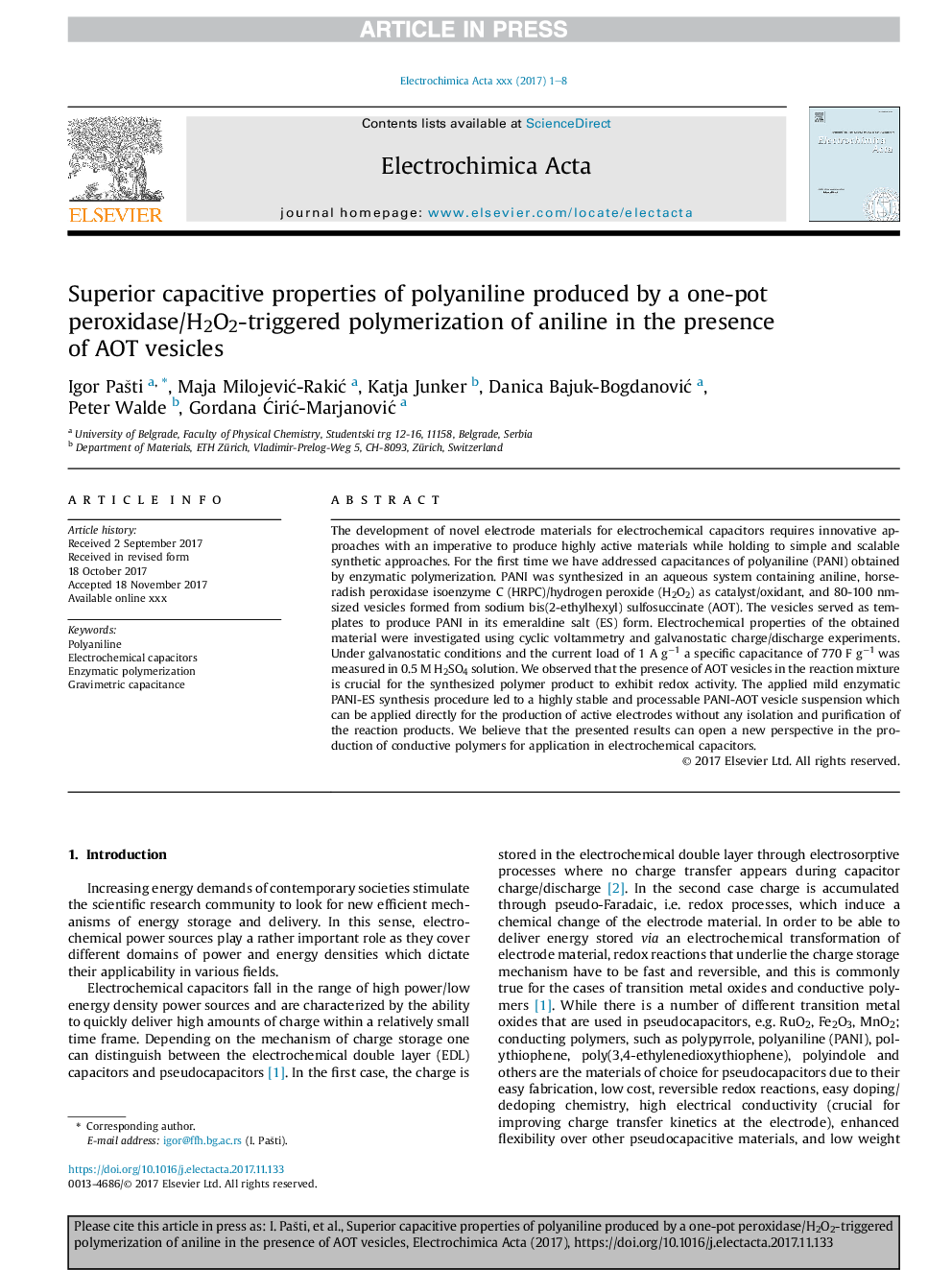| Article ID | Journal | Published Year | Pages | File Type |
|---|---|---|---|---|
| 6605251 | Electrochimica Acta | 2017 | 8 Pages |
Abstract
The development of novel electrode materials for electrochemical capacitors requires innovative approaches with an imperative to produce highly active materials while holding to simple and scalable synthetic approaches. For the first time we have addressed capacitances of polyaniline (PANI) obtained by enzymatic polymerization. PANI was synthesized in an aqueous system containing aniline, horseradish peroxidase isoenzyme C (HRPC)/hydrogen peroxide (H2O2) as catalyst/oxidant, and 80-100Â nm-sized vesicles formed from sodium bis(2-ethylhexyl) sulfosuccinate (AOT). The vesicles served as templates to produce PANI in its emeraldine salt (ES) form. Electrochemical properties of the obtained material were investigated using cyclic voltammetry and galvanostatic charge/discharge experiments. Under galvanostatic conditions and the current load of 1Â AÂ gâ1 a specific capacitance of 770Â FÂ gâ1 was measured in 0.5Â MÂ H2SO4 solution. We observed that the presence of AOT vesicles in the reaction mixture is crucial for the synthesized polymer product to exhibit redox activity. The applied mild enzymatic PANI-ES synthesis procedure led to a highly stable and processable PANI-AOT vesicle suspension which can be applied directly for the production of active electrodes without any isolation and purification of the reaction products. We believe that the presented results can open a new perspective in the production of conductive polymers for application in electrochemical capacitors.
Related Topics
Physical Sciences and Engineering
Chemical Engineering
Chemical Engineering (General)
Authors
Igor PaÅ¡ti, Maja MilojeviÄ-RakiÄ, Katja Junker, Danica Bajuk-BogdanoviÄ, Peter Walde, Gordana ÄiriÄ-MarjanoviÄ,
